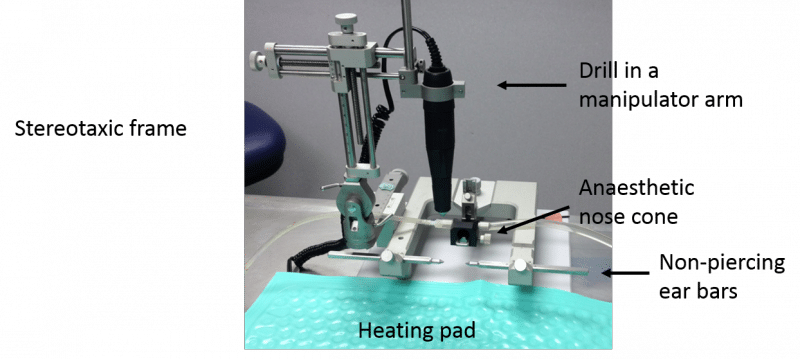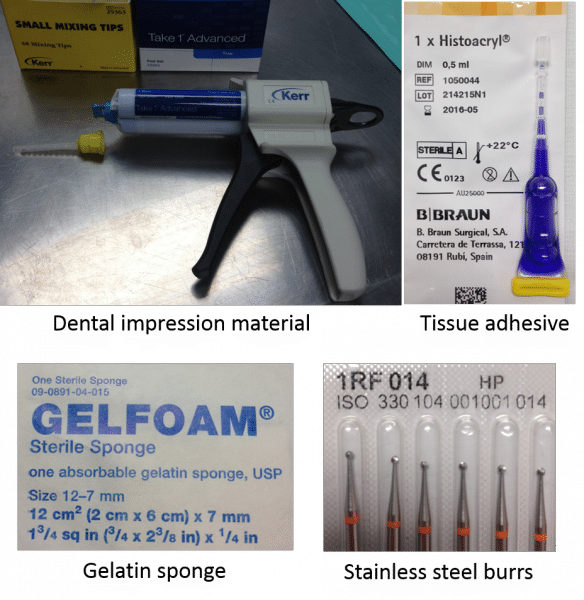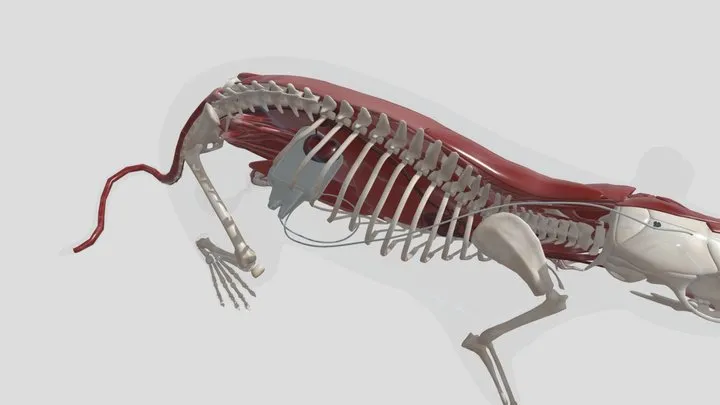The video above highlight the surgical methodology used in the paper “Recording of intracranial pressure in conscious rats via telemetry” by Guild et al., 2015 (DOI:10.1152/japplphysiol.00165.2015).
Kaha pressure telemeters fitted with a 25cm pressure catheter can be used to record intracranial pressure (ICP). The body of the telemeter is implanted in the abdomen (see the surgical video in the “Arterial Blood Pressure” menu, titled “Telemeter Placement in the Abdomen”), and the pressure catheter is tunneled to the neck using a trocar. The pressure sensor is advanced into the subdural space and the skull is sealed for the recording of pressure. For more information about the applications of ICP and the recorded signal, please view the webinar.
Equipment and Materials
The equipment and materials used in the video are highlighted here.
A stereotaxic frame with a manipulator arm to hold the drill is used to keep the rat skull stable when drilling burr holes. Non-piercing ear bars are used to prevent damage to the ear drums in the stereotaxic frame. It is highly recommended that a stereotaxic frame is used during this surgery to prevent damage to the brain tissue.

A trocar with a beveled end is used to tunnel the pressure catheter under the skin of the rat with minimal damage to the catheter and sensor, as well as keeping the catheter and sensor sterile in the process. Similarly, we highly recommend the use of silicone covered forceps when handling the pressure catheter to prevent damage.


Consumables used in the video are shown below. Stainless steel burrs are used with the drill to make the 1.4mm burr hole to advance the pressure catheter and to thread through the screws. They can be sterilized before use by autoclaving with the surgical instruments or placed in 70% alcohol for 30 minutes. Gelfoam (gelatin sponge), which expands with moisture, is used to fill up the burr hole in the area immediately around the pressure catheter. This helps close the burr hole made in the skull, which is important for pressure measurement, as well as prevents tissue adhesive (used in conjunction with surgical mesh to secure the pressure catheter in place) from running down into the brain. Stainless steel screws are used as an anchor to hold the dental impression material in place, which provides extra security to hold the pressure catheter in place, as well as aids in sealing the burr hole made.

Videos contain content hosted by Millar prior to the formation of Kaha Sciences. Kaha Sciences is an ADInstruments brand. Any contact details provided in videos are now out of date - For all product information or support, please contact us.
